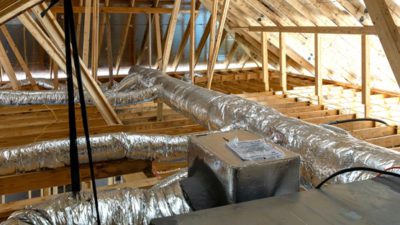The winter season brings with it not just chilly temperatures but also the risk of frozen pipes, a common culprit behind property damage and costly repairs. By taking a few simple precautions, you can spare yourself the headache of cleanup and potential losses.
Let’s explore why pipes freeze, which ones are most at risk, and practical steps to prevent and address frozen pipes effectively.
Why do pipes freeze and burst?
Frozen pipes pose a significant threat, as the expansion of water within them can exert pressure exceeding 2,000 pounds per square inch, leading to bursts and potential water damage.
The aftermath of a burst pipe can result in several hundred gallons of water per hour flooding your home, with the average cost of water damage restoration ranging from $1,304 to $5,515, or even more when factoring in additional repairs.
Which pipes are most at risk?
Pipes located in interior spaces with minimal or no heating, such as basements, attics, and garages, are particularly susceptible. Even pipes running through cabinets or exterior walls can be at risk. Awareness of these vulnerable areas is crucial for effective prevention.
What can you do to prevent your pipes from freezing?
Taking proactive steps before the temperature drops below 20 degrees can save you from potential disaster. Some of these tips might go against your urge to save money, energy, and water (we get it!) but could be necessary (temporary) actions to help prevent your pipes from freezing.
-
- Keep garage doors closed especially if there are water supply lines in the garage
-
- Open kitchen and bathroom cabinet doors to allow warm air to access your pipes, particularly if located on exposed exterior walls
-
- Let cold water drip from a faucet served by exposed pipes; even a trickle of water running through pipes can prevent them from freezing
-
- Apply low-cost pipe insulation, remembering that it slows heat transfer but won’t prevent freezing if the surrounding air is too cold
-
- Monitor thermostat settings, avoiding lower nighttime temperatures during freezing conditions – if you plan to be away during the low temps, don’t leave your thermostat set below 55 degrees
-
- Add insulation to places like attics and basements, and air seal your home to prevent the cold from getting in through gaps and cracks
-
- Winterize outdoor faucets by removing garden hoses, turning off water inside, and draining exterior pipes
What do you do if your pipes freeze?
If you turn on a faucet and only a trickle of water can come out, your pipes might be frozen. Initially, there might not be any leaking since frozen water can cause blockage in the pipe. When the ice begins to thaw, that’s when you’re at risk to have a lot of water in your home.
-
- Find the pipe, which is usually revealed at a faucet that provides no water or a slow trickle; look for parts of the pipe that have frost or ice, or the pipe may also be slightly bulged or fissured
-
- Immediately work to thaw it, but how you thaw the pipe will depend on where it is located
-
- If the water is still running and no pipes have burst, you should turn on the faucet and apply heat until pressure is restored
-
- Turn up the heat If you are very concerned that a burst pipe is imminent and if it’s behind the surface of a wall or ceiling, cut out a section of the wall or ceiling to access the frozen section of pipe, then thaw the pipe as if it were an exposed pipe
-
- If it’s an exposed pipe, you can start right away by applying heat to the section of the pipe using a hair dryer or portable space heater, or by wrapping pipes with towels soaked in hot water (If you use a hair dryer and the pipe is close to the wall, place a cookie sheet behind the pipe to help radiate heat onto the backside of the pipe)
-
- No matter how you choose to warm up your pipe, start heating the pipe from the faucet side toward the frozen area so that water will flow out as the ice melts
-
- Check all pipes in your home to make sure other pipes are safe
-
- If a pipe has burst, turn off the water at the main shutoff valve and seek professional help from a licensed plumber
There have been some really cold days so far this winter and more are ahead! Stay warm and keep your family safe by preparing for the dips in temperatures. Call HomeWorks Energy at (781) 305-3319 or visit HomeWorksEnergy.com to schedule insulation upgrades to make your home more comfortable and better off in the winter.
Are there insulation discounts available?
The Mass Save® Sponsors are offering 75-100% off insulation upgrades and 0% financing for any leftover costs. Plus, there are federal tax credits through the Inflation Reduction Act up to $1,200 to help with the home energy efficiency investment.
If you’re not sure if you have enough insulation in your home, you can sign up for a no-cost Mass Save Home Energy Assessment, and get your insulation assessed!
Preparing for winter’s challenges is key to a comfortable and stress-free season. Don’t let frozen pipes catch you off guard – act now to protect your home and enjoy a worry–free winter.





